


![]()
Test camera images
LXPro Ball spin and spin axis lab / bench test video number 2.
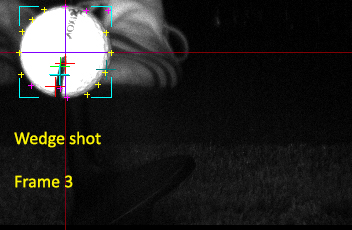
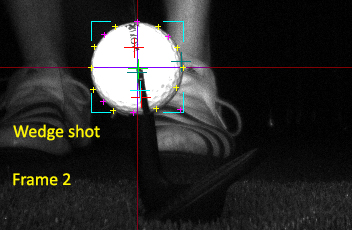
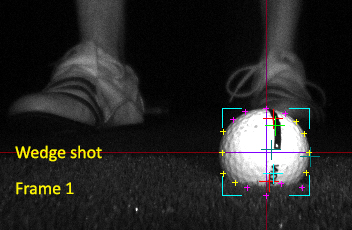
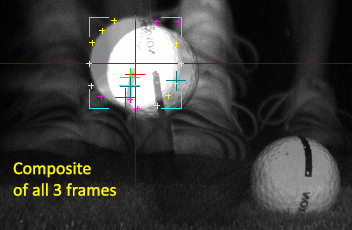
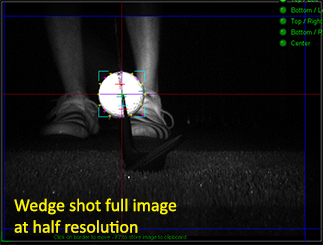

The above LX Pro images are of a test wedge shot.
Wedge shots can be tricky as the players feet and legs will be closer together and be captured in the images, plus - due to the high club loft - the club will get under the ball and not stay behind it.
Notice that even though the players white shoes and legs are in the images, this doesn't cause an issue with the image processing.
Actually, the test was to see if a wedge with a dark club head would cause problems with the dark spin line detection on the ball but this wasn't an issue.
More importantly would be too know if a bright chrome wedge getting under the ball would cause problems.
We had done these tests before without any issues but just to make sure I Photoshoped some club reflections onto one of the images and ran it through the software again this morning.
As you can see neither white shoes, legs or club-head reflections under or behind the ball caused any issues. Many months of software programming went into this ability though.
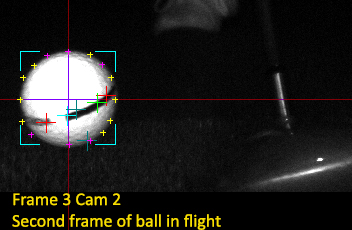 -
-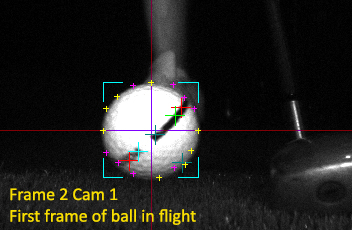 -
-
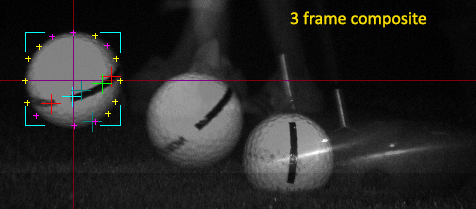
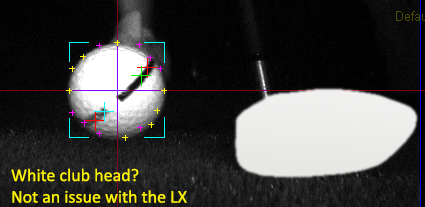
The above are test shots made with the LX Pro yesterday using a line scan camera to trigger the image capturing sequence instead of a microphone. Worked out really great so we're ready to go here.
We did have some issues with the players legs and white shoes in the images interfering with the ball size detection though. Of course - not wanting to stipulate that the user not wear white shoes - we had to fix this.
Some have asked us if there is going to be a problem with white clubs as there is a camera based launch monitor on the market that has an issue with this. Well, we tried it and found that the LX doesn't have this problem.
The reason being is that we are assuming that the club will always be behind the ball and the image processing searches for the first round object from left to right in the image.
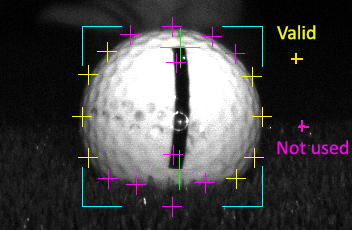

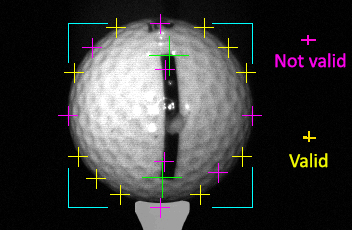
A double pass (course and fine) method is now being used to further increase the ball size detection accuracy in the LX images.
Because the LX Lite - which uses just one camera - requires that we accurately determine the ball image size of the ball on the launch position as well as in flight we made the following image processing improvements:
1. When ball is placed on the ground - ie not on a tee - the lower portion of the ball will be embedded in grass. We thus have to eliminate the 3 ball perimeter points at the bottom of the ball. The corresponding top 3 points are also eliminated as we measure ball size between one point and it's opposite.
2. A method was developed to determine if the ball is on a tee and not on the ground. If it is found that the ball is on the tee then we only have to force eliminate the bottom and top perimeter points.
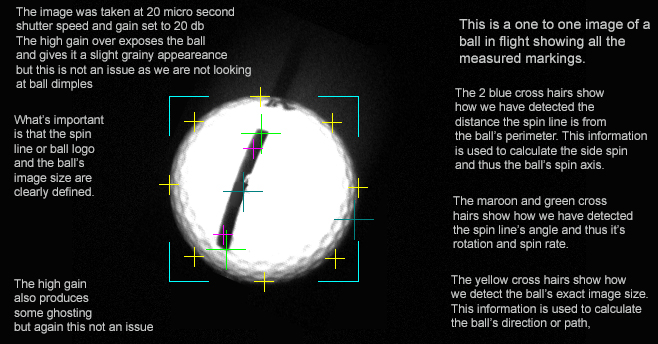
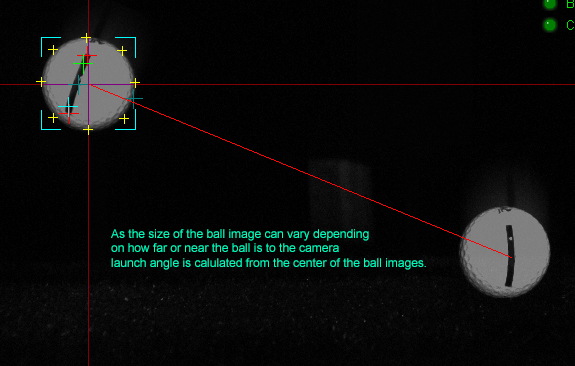
July 07 2013
LX test frames
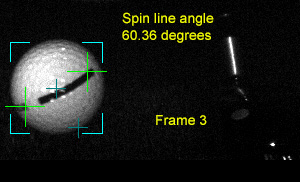
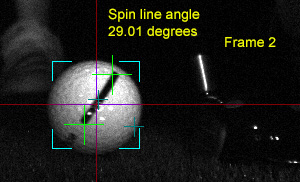


he above images show a straight 3 wood shot with spin axis near zero.
Spin rate is calculated between frame 2 and 3.
Spin line rotation between frame 2 and 3 = 60.36 - 29-01 = 31.35 degrees. Time interval between frame 2 and frame 3 = 0.001 seconds (1ms).
To get the spin rate in rpm we first need to calculate the time required for a complete revolution (360 degrees)
There a number of ways to calculate this and this is just one of them:
The ball turned 31.35 degrees within the time interval between frame 2 and 3 which is 8.7 percent of the 360 degrees. ---- (31.35/360) * 100
Time (t) = 0.001 seconds. Degree shift (s) = 31.35 degrees
Time required to turn 1 degree is thus t / s = 0.001 / 31.35 = 0.00003189 seconds
Total time required to complete 360 degrees is thus 0.00003189 * 360 = 0.01148 seconds
Revolutions per second = 1/ timeForCompleteRev = 1 / 0.01148 = 87.108 rps
rpm = rps * 60 = 87.108 * 60 = 5226 rpm
Rounding accounts for the 2 rpm discrepancy here
LX large FOV (field of view) and image size cameras

Unlike another well known camera based launch monitor on the market, the GSA Golf LX uses large FOV and image size cameras that don't require the unit to be moved in anyway depending on the speed of the shot or high or low the tee is.
I couldn't believe my eyes when viewing the video this other launch monitor manufacturer has on YouTube today about how their unit has to be moved back or forth depending on how fast or slow the shot is going to be and must be tilted back or forth depending on how high or low the tee is in order to keep the ball images in the FOV of the camera(s).
LX test frames
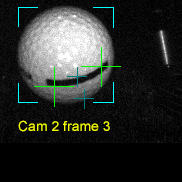
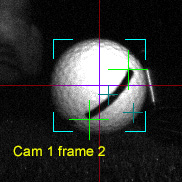

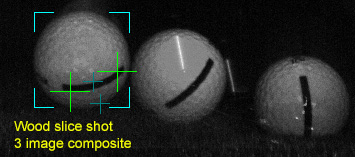
The above images show the 3 frames captured by the LX Duo and Pro of a full speed wood shot with an open club face producing a slice. Notice how the spin line center of rotation shifts.
The small blue cross hairs show how the image processing detected the spin line center of rotation shift. i.e. the distance the center of rotation is from the ball's perimeter.
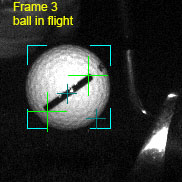
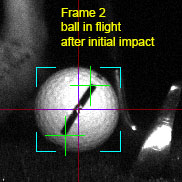
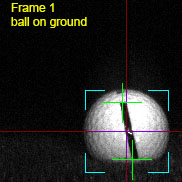

These images show the 3 frames captured by the LX Duo and Pro of a medium speed iron shot with a fairly straight club face producing little side spin. i.e. the spin line's rotation stays centered and thus spin axis is near zero.
We're comparing the data obtained with the single camera LX Lite and dual cameras used in the LX Duo and LX Pro at the moment.

In this test we produced an exaggerated open the club face to see the amount of side spin - ie the amount the spin line shifted on the X axis. As you can see, the spin line shifted quite a bit off center which resulted in a huge slice.
The ability to convert this spin line side shift into spin axis is one of the most important features of the LX.
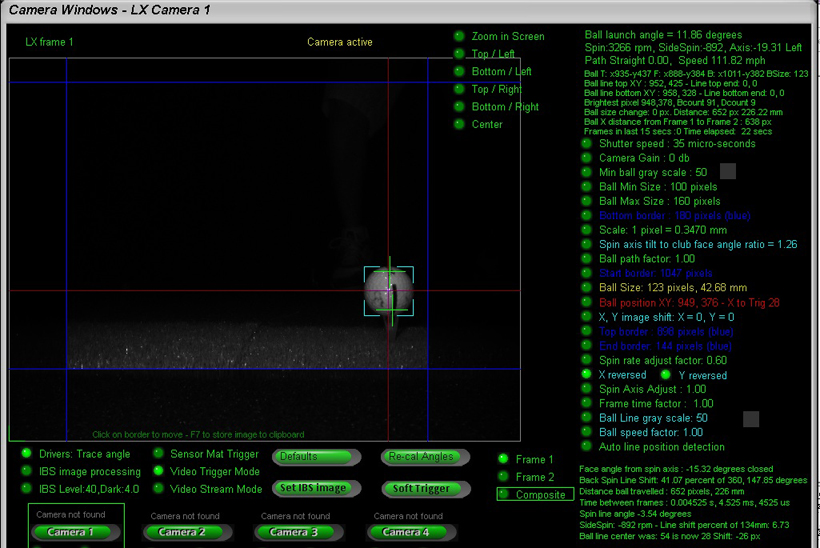
Test 1. Shot of ball on tee - Frame 1. Ball has been marked R and L in this test to see it's rotation up to 360 degrees
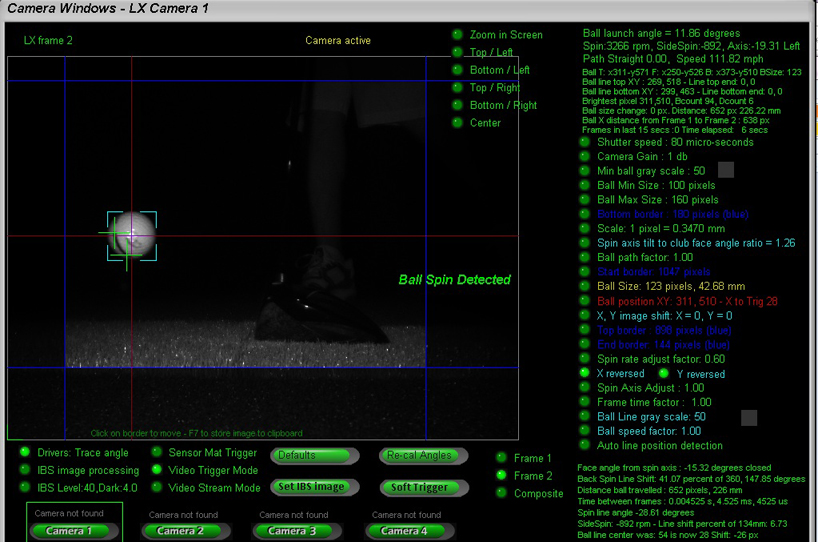
Test 1. Shot of ball during flight- Frame 2. Image shows that ball has rotated 147 degrees in the frame time
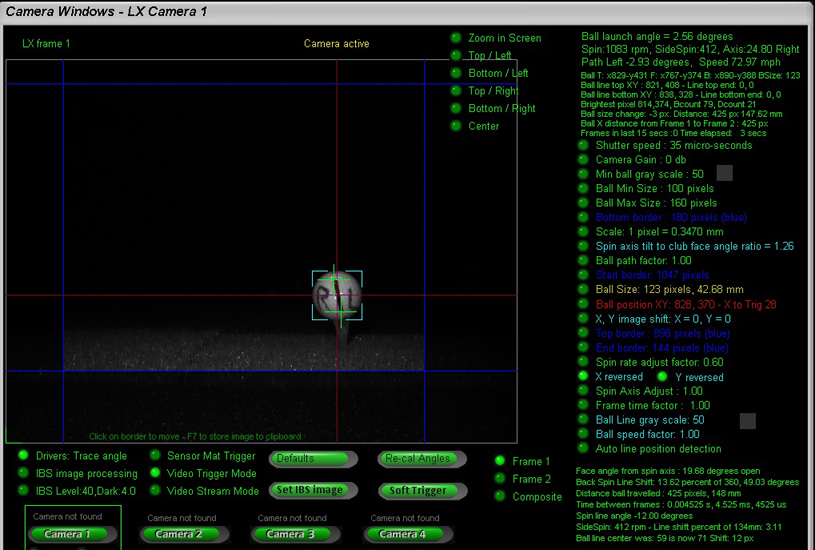
Test 2. Shot of ball on tee - Frame 1. Ball has been marked R and L in this test to see it's rotation up to 360 degrees
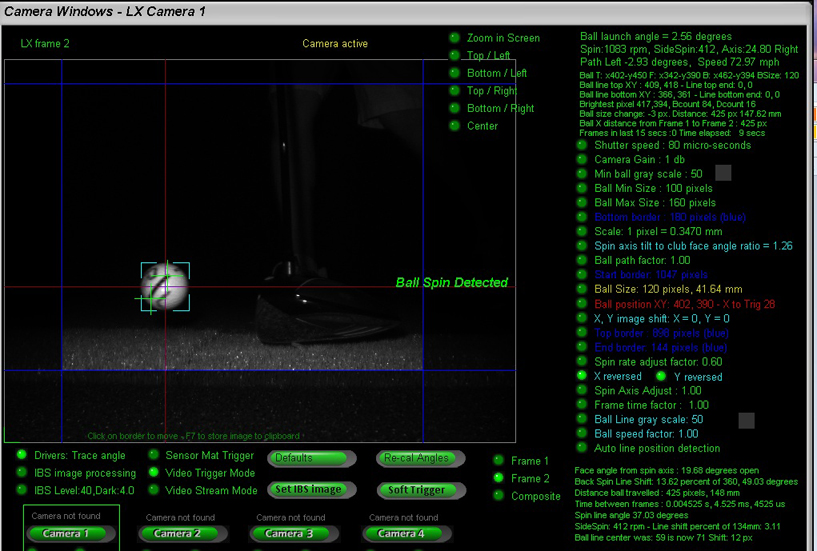
Test 2. Shot of ball during flight- Frame 2. Image shows that ball has rotated 49 degrees in the frame time
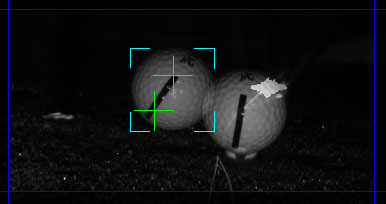

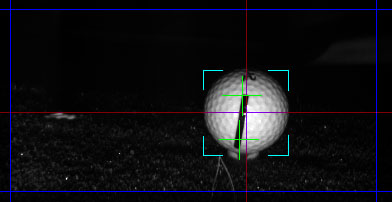
The above camera composite shots show the LX capturing spin, spin axis, vertical launch angle, ball path and speed using a ball with a stripe

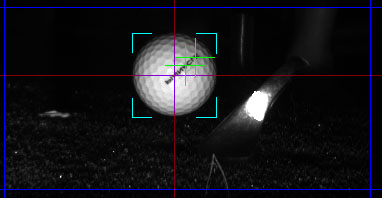
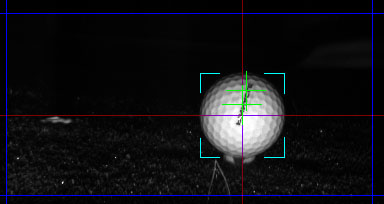
The above and below camera shots show the LX capturing spin,spin axis, vertical launch angle, ball path and speed using a ball without a stripe and just picking up the manufacturers logo markings.
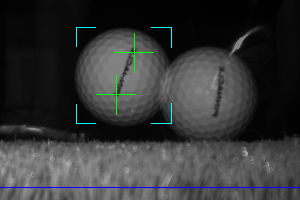 --
-- 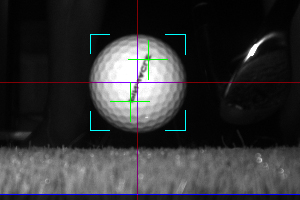 --
-- 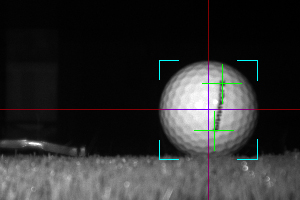
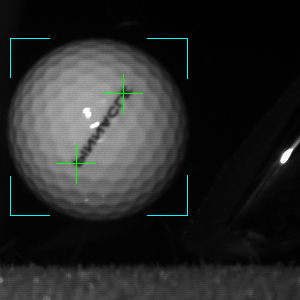 -
-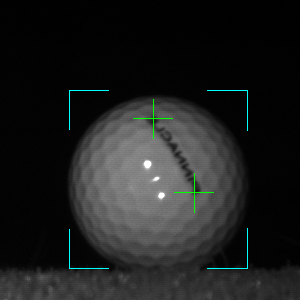
The above 2 images show the camera's high level of detail. Resolution is 1 to 1 here. i.e. as the camera sees the ball.
![]()